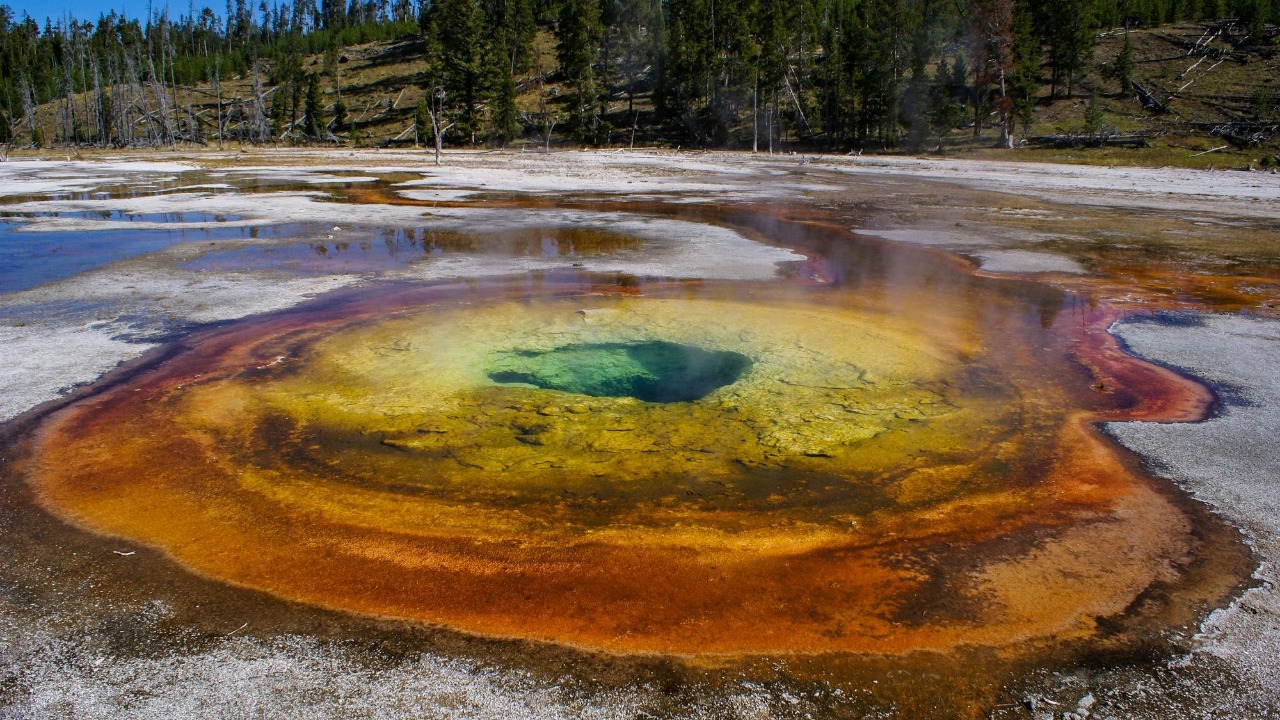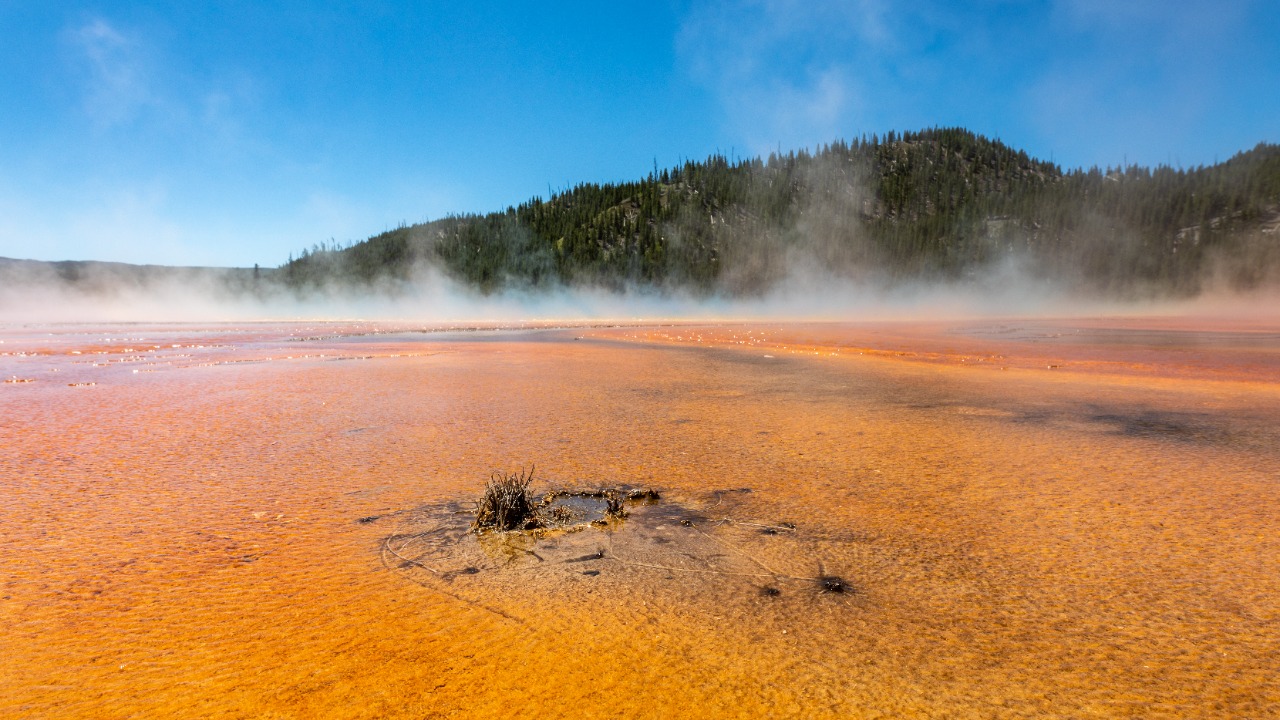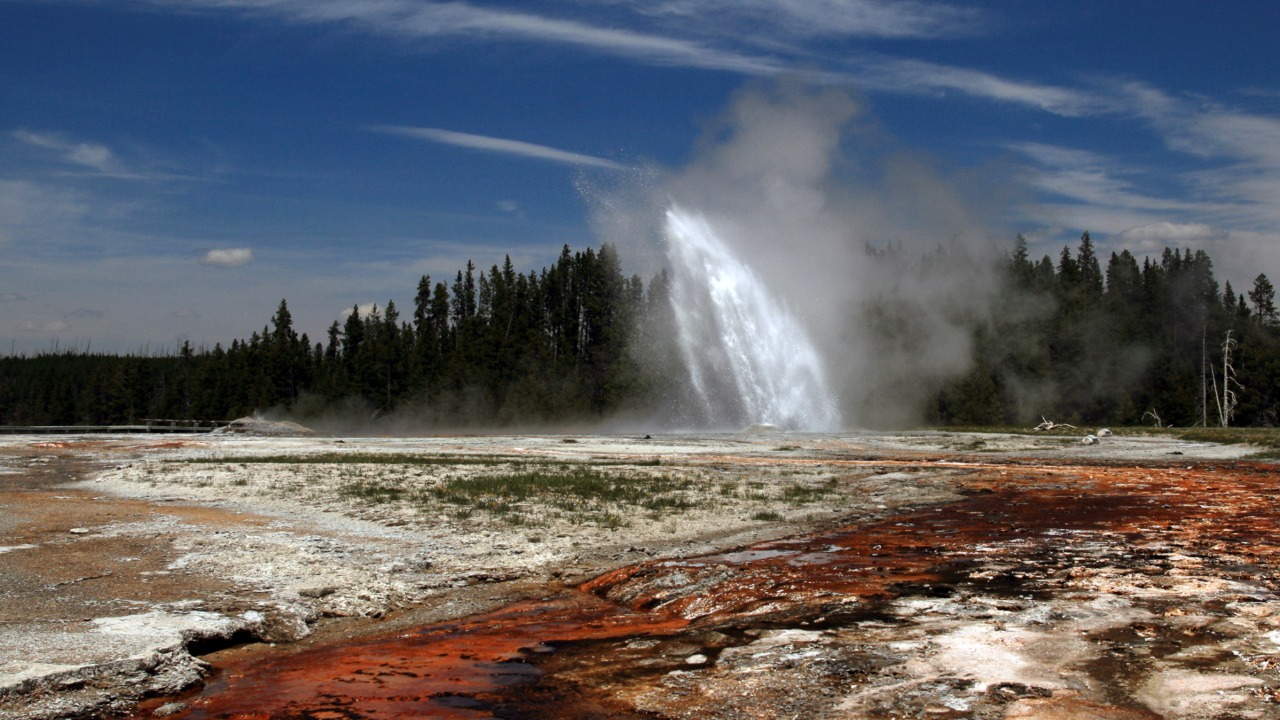
The awe-inspiring geologic features of Yellowstone National Park have long been a source of scientific intrigue and public fascination. Recent research has unveiled a new layer of complexity to the park’s geology: a magma cap beneath the surface. The discovery of this magma cap provides new insights into Yellowstone’s volcanic activity and potential for future eruptions.
Understanding the Yellowstone Supervolcano

Yellowstone National Park is home to a supervolcano, a term used to describe a volcano capable of producing an eruption with total ejecta volume greater than 1,000 cubic kilometers. This term, while not a technical designation, is indicative of the immense power and potential impact of these geological phenomena.
Yellowstone’s volcanic history is vast and eventful, with three enormous eruptions occurring in the past 2.1 million years. The most recent of these, which took place 640,000 years ago, resulted in the creation of the Yellowstone Caldera, a volcanic feature that stretches 30 by 45 miles. However, despite its explosive past, Yellowstone’s current volcanic activity is characterized more by geothermal features like geysers and hot springs than by eruptions.
The Discovery of the Magma Cap

The discovery of the magma cap at Yellowstone was facilitated by advancements in geophysical imaging techniques. Measurement of seismic waves allowed researchers to map the subsurface magma reservoir. This research revealed a vast body of partially molten rock located 4 to 14 miles beneath the surface.
The magma cap is estimated to be approximately 90 kilometers long and 40 kilometers wide. It is not entirely filled with magma, but rather contains about 9% molten rock interspersed within hot solid rock. This vast underground reservoir is believed to feed the geothermal features we see at the surface of Yellowstone today.
The Significance of the Magma Cap

The discovery of the magma cap is significant as it adds a new layer of understanding to the complex volcanic system beneath Yellowstone. The presence of this magma reservoir could influence the behavior of the supervolcano, potentially contributing to the onset and magnitude of future eruptions.
The magma cap also plays a crucial role in the park’s geothermal activity. It is believed to be the heat source for Yellowstone’s famous geysers and hot springs. Furthermore, changes in the magma cap could impact these geothermal features, potentially altering their frequency and intensity.
The Role of the Magma Cap in Predicting Eruptions

While the discovery of the magma cap provides valuable insights into the Yellowstone supervolcano, its role in predicting future eruptions remains uncertain. It is known that the magma cap is a crucial component of the volcanic system, but how it might contribute to eruption triggers is still a subject of ongoing research.
Current understanding suggests that a number of factors, including changes in magma pressure and composition, could trigger an eruption. However, predicting these changes with precision is a significant challenge. The interplay between these factors and the magma cap is complex and not fully understood, adding a layer of uncertainty to eruption forecasting.
Implications for Public Safety and Policy

The potential risks associated with a supervolcanic eruption at Yellowstone are significant. Such an event could have far-reaching impacts, affecting not only the immediate area but also potentially causing global climate effects. As such, the discovery of the magma cap has implications for emergency planning and public safety measures.
Understanding the behavior of the magma cap and its influence on eruption potential can assist in refining evacuation strategies and emergency plans. It also underscores the importance of ongoing scientific research in informing policy decisions. The role of science in enhancing public safety cannot be overstated, particularly in the context of natural hazards like supervolcanoes. A detailed understanding of Yellowstone’s magma cap and its implications for volcanic activity is essential in preparing for potential eruptions.
In conclusion, the discovery of the magma cap beneath Yellowstone National Park offers new insights into the park’s geologic activity and potential for future eruptions. As researchers continue to study this fascinating geological feature, their findings will undoubtedly contribute to our understanding of supervolcanoes and inform strategies to mitigate their potential hazards.